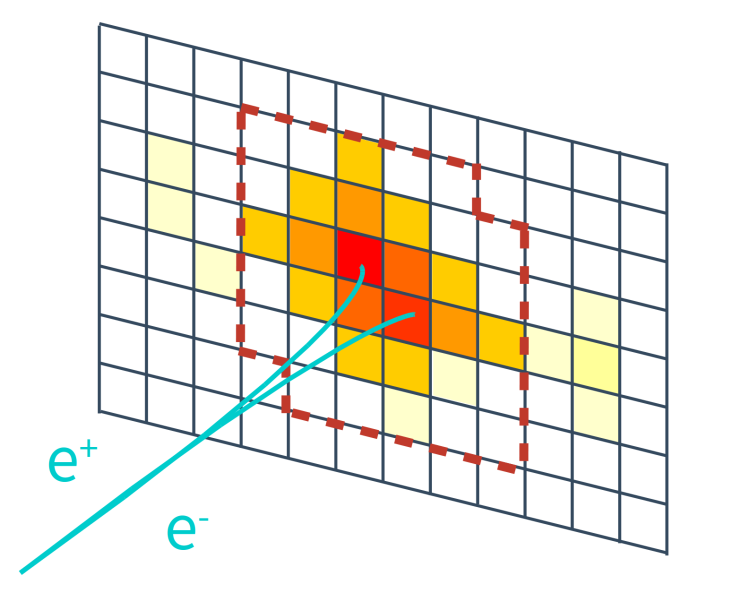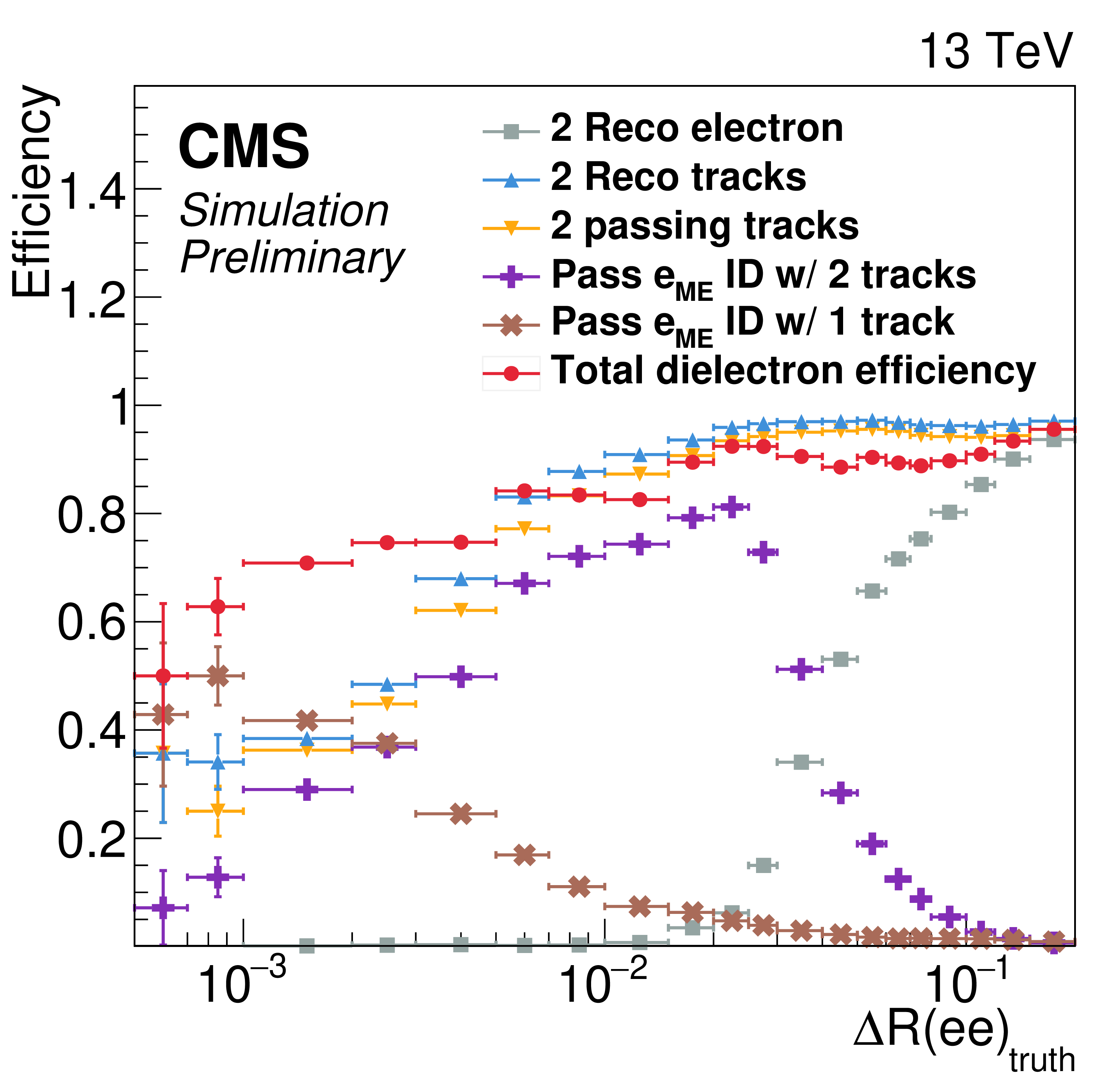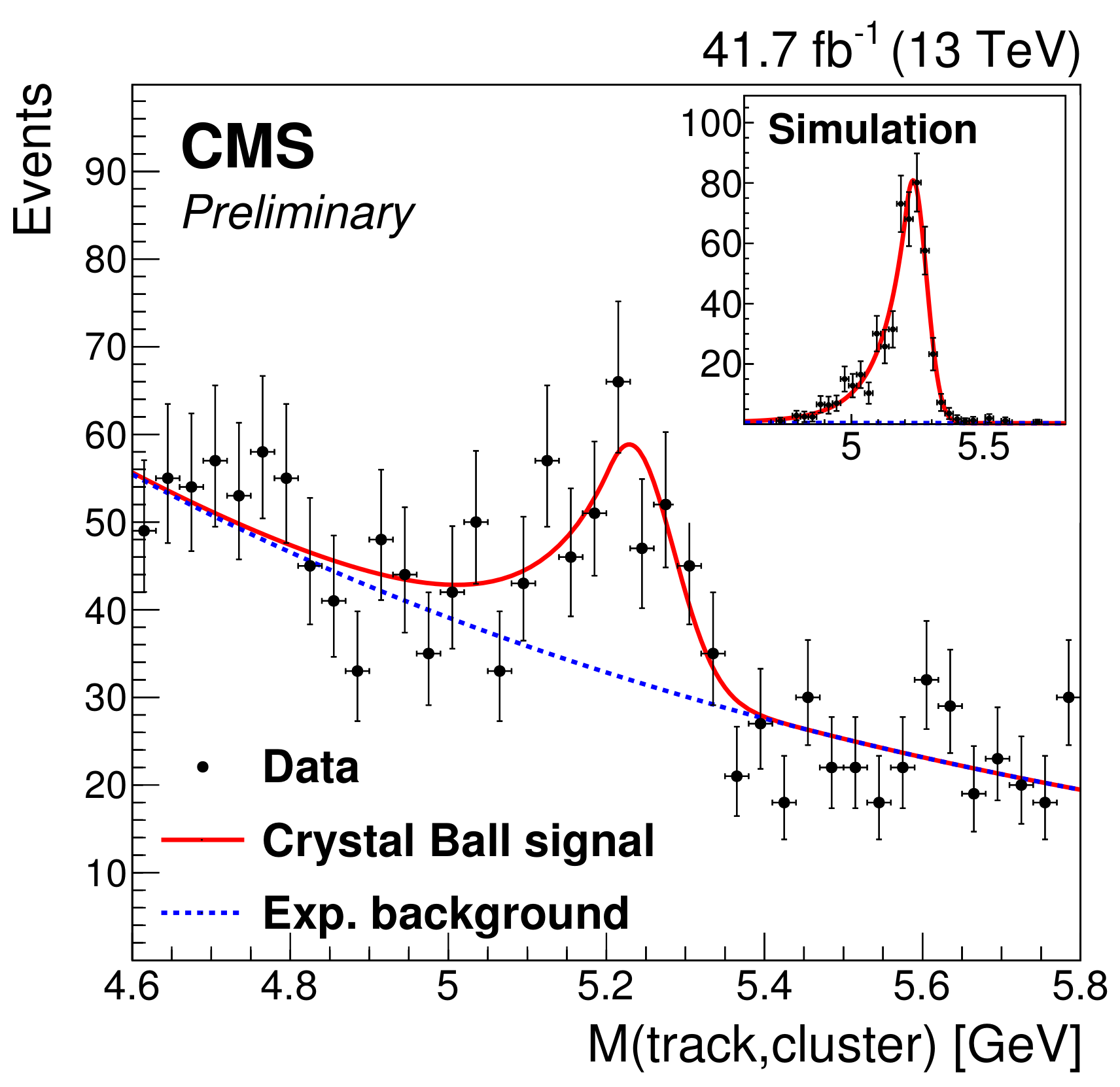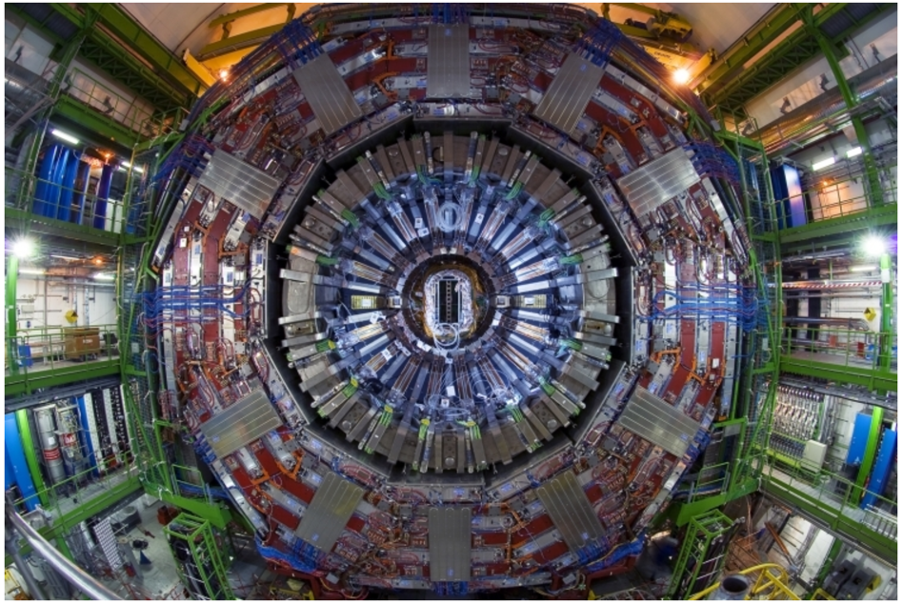
The CMS collaboration has developed a new technique to distinguish electron-positron pairs travelling so closely together that we see them as a single cluster of deposited energy.
Identifying electrons is one of the greatest strengths of the CMS detector, thanks to its lead tungstate crystal electromagnetic calorimeter (ECAL). Electrons entering the crystal create a shower of particles that produce flashes of light (scintillation) proportional in strength to the deposited energy inside the crystal. We can estimate the electron's energy by clustering multiple crystals together and verify that it really corresponds to an electron by searching for a charged-particle track in the CMS tracker that is spatially compatible with the cluster.
Several theories beyond the standard model predict the existence of a light-weight boson which can decay into an electron-positron (e+e-) pair. An e+e- pair travels closely together and in the same direction (in collimated trajectories), if the hypothetical boson is produced from the decay of a heavy particle. In extreme cases, the e+e- pair travels so closely together that their trajectories overlap in the CMS tracker, leading to one single charged-particle track rather than two. The standard reconstruction techniques are not designed to distinguish the two individual particles in such a “merged electron” signature. The presence of more than one charged-particle trajectory nearby is not sufficient to identify such merged electrons unambiguously, since even a single electron can produce multiple tracks from interactions with the detector material.
Recently, the CMS Collaboration developed a new technique to identify such merged electrons. It is based on machine learning and applied to scenarios with and without an associated secondary track, taking into account the compatibility between the cluster and the two tracks in terms of geometry and energy. Previously, the standard reconstruction technique could only provide good efficiency for an angular separation (ΔR) above 0.1, quickly becoming inefficient at smaller values. With the newly developed technique, we can distinguish e+e- pairs with angular separation at the level of 0.001!

Figure 1: The e+e- pair identification efficiency in simulation as a function of the angular separation (ΔR) between the two. The gray line represents the standard technique. The blue line shows the efficiency for reconstructing two charged-particle tracks, and the yellow line is the efficiency after rejecting poor-quality tracks. The purple and brown show the new technique with and without the assistance of a second track nearby, respectively. The red illustrates the final efficiency, the sum of the gray, purple, and brown.
The most challenging part, however, was understanding how the new algorithm performs with actual data, not only in simulation. Usually, we measure efficiency in data using a particle that decays into the object we want to measure (like Z bosons decaying into electrons or muons). Such processes give a unique resonant structure over the mass spectrum, which can be easily identified as a signal that either passes or fails the criteria. For the merged electrons, we can measure the efficiency by looking for either a highly energetic J/ψ meson or a photon that turns into an e+e- pair.
Additionally, since the energy measurement is not perfect, the measured energy may differ from its true value in both the average ("scale") and the spread around the average ("resolution"). We can examine the scale and the resolution of the merged cluster by looking at the resonant shape in B→J/ψK decays, where the J/ψ becomes the merged cluster and the kaon forms a charged-particle trajectory. This provides a powerful tool to validate the consistency in energy measurement between data and simulation.

Figure 2: The invariant mass distribution of a track and the identified merged cluster from B→J/ψK→(e+e-)mergedK decays in data (main figure) and simulation (sub-figure in the top right).
With this new technique and a solid understanding of how well it performs with data, CMS now has sharper eyesight to search for new phenomena!
Written by: Sanghyun Ko, for the CMS Collaboration
Edited by: Andrés G. Delannoy
Read more about these results:
-
CMS Physics Analysis Summary (EGM-24-002): "Highly boosted dielectron identification in proton-proton collisions at √s = 13 TeV"
-
@CMSExperiment on social media: Bluesky - Facebook - Twitter - Instagram - LinkedIn - TikTok - YouTube

